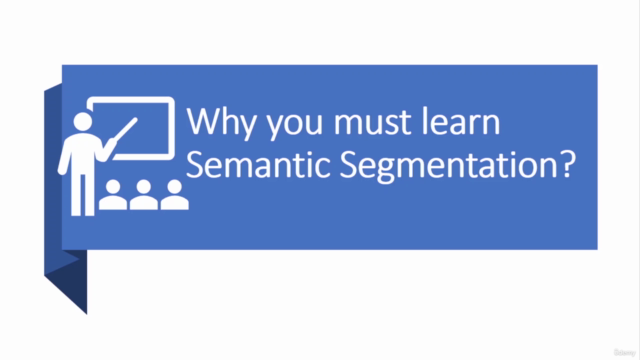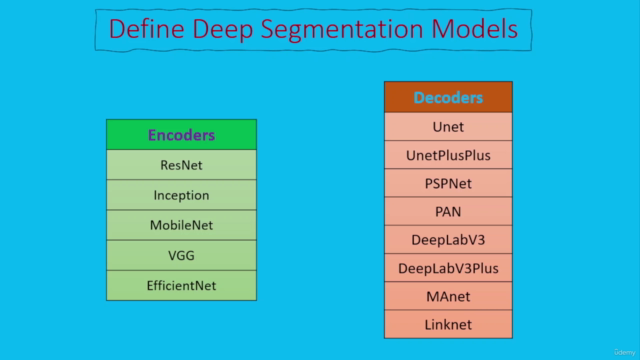Deep Learning for Image Segmentation with Python & Pytorch

Why take this course?
🌟 Course Title: Image Semantic Segmentation for Computer Vision with PyTorch & Python to Train & Deploy YOUR own Models (UNet, DeepLab)
Course Description:
Embark on a deep dive into the fascinating world of Deep Learning as it applies to Semantic Image Segmentation. This course is meticulously crafted for those eager to elevate their expertise in leveraging Deep Learning technologies to dissect and understand visual data. With a strong emphasis on hands-on experience, you'll journey through the intricacies of implementing and training your own models for Semantic Segmentation using Python and PyTorch. 🧐
Who Is This Course For?
This comprehensive course is tailored for a diverse group of learners:
- Machine Learning Engineers, Deep Learning Engineers, and Data Scientists aiming to apply Deep Learning in image segmentation tasks.
- Computer Vision Engineers and Researchers looking to explore PyTorch's capabilities in building deep learning models for semantic segmentation.
- Developers seeking to enrich their projects with Semantic Segmentation features.
- Graduates & Researchers in Computer Science, Electrical Engineering, and related fields interested in the forefront of Deep Learning applications in image processing.
- Anyone curious about harnessing the power of Deep Learning to extract meaningful patterns and insights from visual data using Python and PyTorch.
Course Highlights:
Throughout this course, you'll cover the full spectrum of the semantic segmentation process with Python and PyTorch:
- Semantic Image Segmentation: Explore its practical applications in real-world scenarios like autonomous vehicles and beyond.
- Deep Learning Architectures: Gain insights into state-of-the-art architectures such as PSPNet, UNet, UNet++, PAN, MTCNet, DeepLabV3, and more.
- Datasets & Data Annotations Tools: Learn how to work with datasets specifically tailored for semantic segmentation tasks.
- Google Colab: Master writing Python code on a free, cloud-based platform that provides computational resources.
- Data Augmentation & Data Loading in PyTorch: Enhance your dataset using data augmentation techniques and learn efficient data loading methods.
- Performance Metrics (IOU): Understand how to evaluate segmentation models with appropriate metrics for accurate performance assessment.
- Transfer Learning & Pretrained Deep ResNet Architecture: Leverage pre-trained architectures to improve model convergence and generalization.
- Segmentation Models Implementation in PyTorch: Explore various encoder and decoder architectures to build robust segmentation models.
- Hyperparameters Optimization: Fine-tune your model's hyperparameters for optimal performance.
- Training of Segmentation Models: Gain hands-on experience in training models from scratch or fine-tuning pre-trained models.
- Evaluation & Visualization: Test your model, calculate IOU, Class-wise IOU, Pixel Accuracy, Precision, Recall, and F-score to assess its performance. Learn to visualize segmentation results effectively.
What You Will Achieve:
By the end of this course, you will be equipped with a solid foundation in semantic image segmentation using Deep Learning. You'll have the practical skills and theoretical knowledge necessary to tackle complex real-world problems in your field. Whether you are a Computer Vision Engineer, Data Scientist, or Developer, this course will empower you to apply deep learning effectively and deploy models that can understand and interpret visual data with remarkable accuracy.
Are you ready to unlock the potential of Deep Learning for Semantic Segmentation? 🚀 Let's embark on this transformative journey together with Mazhar Hussain, your expert guide through the world of PyTorch and Python!
Course Gallery




Loading charts...